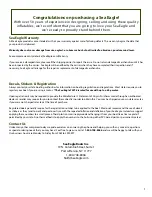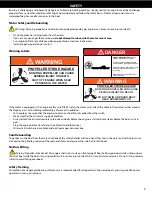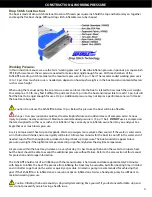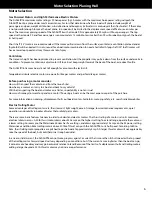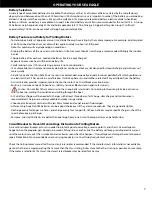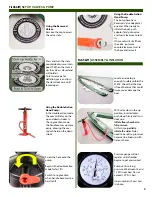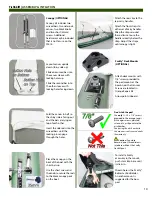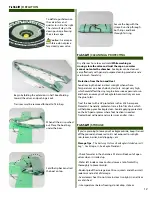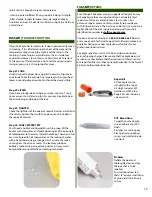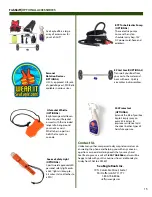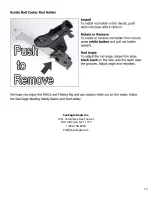
6
Motor Selection Planing Hull
Motor Selection
Gas Powered Motors and High Performance Electric Motors
The FishSkiff16 maximum motor rating is 20 horsepower (hp). A motor with the maximum horsepower rating will push the
FishSkiff16 onto a plane under most circumstances. Factors that determine whether a boat will plane include weight of
passengers and gear, weight distribution, wind direction and buoyancy (saltwater is more buoyant than freshwater). If the motor
is not powerful enough to make the boat plane, top speed will be limited to the displacement speed of five to seven miles per
hour. The maximum planing speed of the FishSkiff16 with a Honda 9.9 is approximately 20 mph with four passengers. The top
speed with a Honda 9.9 and four passengers is approximately 13 mph. Motors smaller than 9.9 will probably only push the boat at
its hull speed.
Short shaft (15”) motors are recommended. If the motor pulls air down from the surface (ventilates) a ventilation plate extender
(hydrofoil) will be needed. It is not unusual for a boat/motor combination to need a hydrofoil. A long shaft (20” shaft) motor will
have a lower top speed and may throw out a lot of spray.
Ventilation
The transom height has been optimized to prevent ventilation, but the propeller may pull air down from the surface under certain
conditions. To prevent ventilation, adjust motor tilt to vertical, keep weight towards the back of the boat, or reduce throttle.
The FishSkiff16 transom board is not tall enough for a motor with electric tilt.
Torqeedo and similar electric motors are powerful like gas motors and perform like gas motors.
Before purchasing a motor consider:
How will I transport the motor to and from the launch site?
How heavy a motor can I carry to a boat and back to my vehicle?
Will I be transporting the boat and motor on a trailer, so portability is not an issue?
How much money do I want to spend on a motor? Powering a boat can be the most expensive part of the purchase.
For more information on planing, displacement hulls, outboard motors, hydrofoils, motoring safety, etc., search reliable websites.
Electric Trolling Motor
Some advantages of trolling motors are; their low cost, light weight, ease of storage, low maintenance requirements, quiet
operation, and usability in bodies of water that prohibit gas motors.
There are some basic features to know in order to understand electric motors. The thrust rating of a motor is also its maximum
electrical draw in amps. A 30 lb thrust motor draws about 30 amps on the highest setting. To extend range, operate the motor on
a lower setting. For example, the Watersnake Venom has five settings, and draws approximately 12 amps on the #3 power setting.
Watersnake and Minn Kota trolling motors above 30 lbs of thrust can push the FishSkiff16 to its hull speed. According to Minn
Kota, their trolling motor propellers are pitched to push a boat at approximately 4 mph. A larger thrust motor will not appreciably
raise the speed of the boat, but could help in a strong headwind.
In a river or tidal current, the FishSkiff16 cannot make progress against a current that is more than its hull speed or the top speed
of the trolling motor. Forward speed will vary depending on conditions, but if the current is moving faster than the boat can go,
it cannot make headway and may go backwards relative to land. Because of the limits of a displacement hull and trolling motors,
adding a larger beyond a 55 lb thrust motor may not increase performance.


